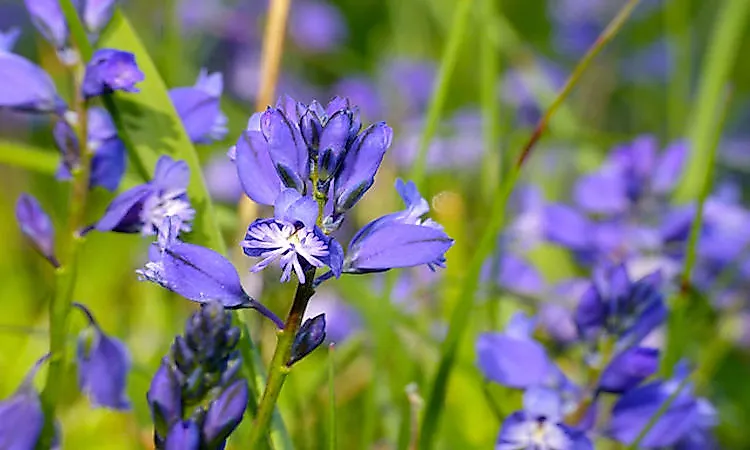Rare Native Plants Of India

Rare Native Plants of India
India is home to around 15,000 plant species which account for 6% of the world’s plant species. The nation has many interesting and unusual plants, from shrubs to conifers. The wide range of plant species is attributed to India’s diverse climate and topology. Some of the plants are endangered, and some are facing extinction due to climate change, human activity, and natural selection.
Milkwort
The scientific name for milkwort is Polygala irregularis. The name Polygala is from ancient Greek meaning ‘much milk’. The plant is a perennial herb that grows in grasslands, edges of forests, meadows and slopes. It can be found in Djibouti, Ethiopia, Kenya, Senegal, Egypt, Arabia, and in India. The average height is 17-34 cm tall. The plant has a cyclic pattern of existence. Milkwort is believed to increase milk production when fed to cows. It also has medicinal values and locals prescribe it to nursing mothers. In recent years, the plant has faced the risk of extinction due to unsustainable use by humans.
Jeemikanda
Jeemikanda is scientifically known as Ceropegia odorata. The plant grows in high altitude areas of more than 3,000meters. The plant has a strong scent and thus the scientific name Odorata. It is harvested for its medicinal value in curing stomach pain and eye problems. Jeemikanda has significantly declined in its native habitat due to overharvesting. It is listed as an endangered plant species.
Spider Wort
The Spider Wort was rediscovered in 2012 after many years of being declared extinct. Its scientific name is Belosynapsis vivipara. It grows in high elevation on thick moss covered tree trunks and on branches of trees in riparian forests. The plant is found in the riparian forest of Chandoli National Park in India. It is considered an endangered species due to the destruction of its native habitat. Conservationists in India demand the total protection of the riparian forest in Chandoli National Park.
Bird's Foot
Bird’s foot scientific name is Lotus corniculatus. It is a plant in the pea family. It is a perennial herb that grows on the roadsides and grasslands. It has beautiful yellow flowers at the end of the stem. It is grown for pasture, hay, and silage. Due to its high demand from farmers, the plant is under threat of extinction.
Assam Catkin Yew
Assam Catkin Yew is scientifically known as Amentotaxus assamica. The plant is a conifer and is only found in India. It grows in Turoo Hills, the Delei valley, and a valley in the Dafla Hills all of them in India. These places are warm temperate mountain rain forest areas. Assam Catkin Yew is commonly used as building material in India. The plant is classified as endangered due to the high demand for building houses. Conservation efforts have been made with the establishment of forest reserves to protect the plant’s native habitat. Cultivation of Assam Catkin Yew is also encouraged to increase the plant’s population.
Conservation Of Plants
India has a wealth of plant species. An International conservation body has declared 161 plant species in India as endangered. The plants are facing threats from people who harvest them for medicinal and commercial use. Changing climatic conditions also pose a threat to the existence of these plant species. Conservation efforts have been established. They include protection of the natural habitats from destruction by humans, measures to reduce global warming and cultivation of the endangered species to increase their population.
Rare Native Plants Of India
| Rare Native Plants of India | Scientific Name |
|---|---|
| Milkwort | Polygala irregularis |
| Jeemikanda | Ceropegia odorata |
| Spider Wort | Belosynapsis vivipara |
| Bird's Foot | Lotus corniculatus |
| Assam Catkin Yew | Amentotaxus assamica |
| Malabar Lily | Chlorophytum malabaricum |
| Musli | Chlorophytum tuberosum |
| Skeleton Fern | Psilotum nudum |
| Umbrella Tree | Acacia planifrons |
| Thuthi | Abutilon indicum |











